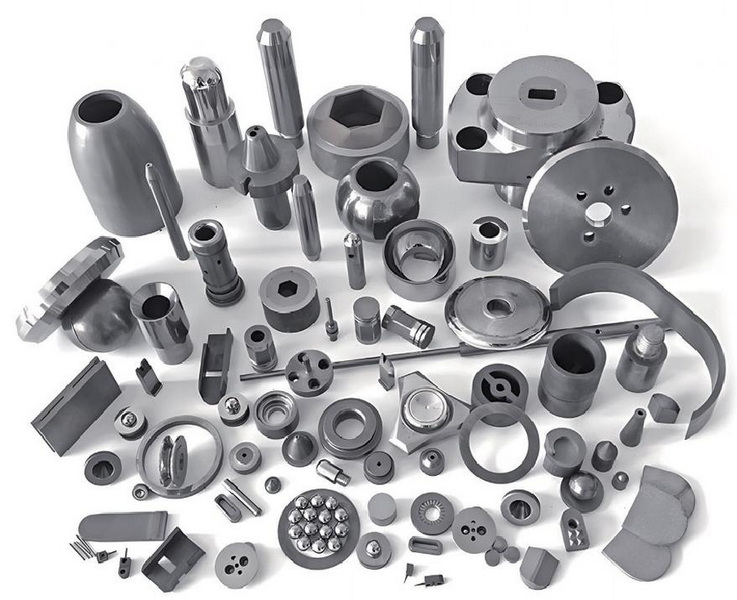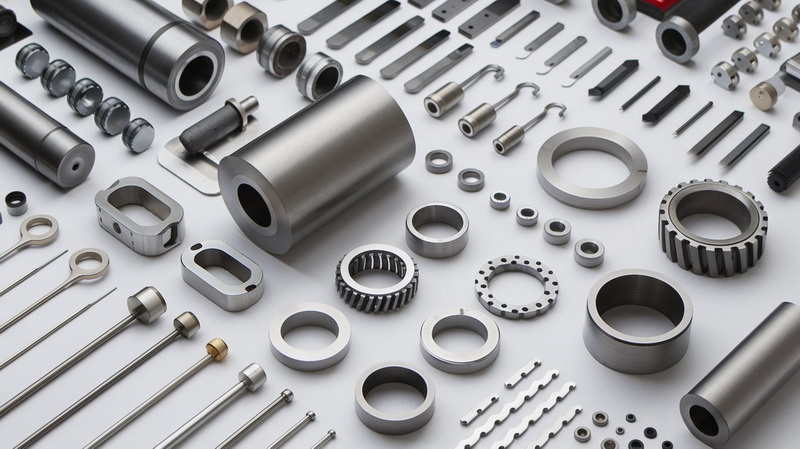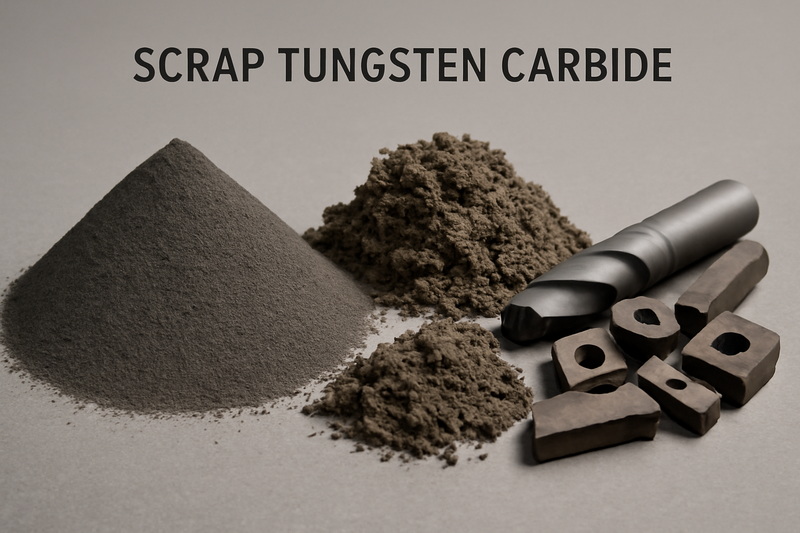Content Menu
● What Is Tungsten Carbide?
● Natural Sources of Tungsten
>> Major Tungsten Deposits Worldwide
● How Is Tungsten Carbide Made?
● Detailed Properties and Types of Tungsten Carbide
● Where Can Tungsten Carbide Be Found in Industry?
>> 1. Manufacturing and Metalworking
>> 2. Mining, Oil, and Gas
>> 3. Aerospace and Aviation
>> 4. Military Applications
>> 5. Jewelry
>> 6. Other Applications
● Expanded Industrial Applications
>> Precision Manufacturing
>> Electronics Industry
>> Medical Instruments
>> Energy Sector
● Where Can You Find Scrap Tungsten Carbide?
● Environmental and Economic Impact
● Future Trends and Innovations
● Historical Background of Tungsten Carbide
● Global Market Overview
● Conclusion
● FAQ
>> 1. Where is tungsten ore mainly found?
>> 2. How is tungsten carbide produced from tungsten ore?
>> 3. What industries use tungsten carbide?
>> 4. Can tungsten carbide be recycled?
>> 5. Why is tungsten carbide so hard?
Tungsten carbide is a remarkable material known for its extreme hardness, wear resistance, and versatility in industrial applications. Despite its widespread use, tungsten carbide is not naturally found in its pure form but is produced through a series of technical processes starting from tungsten ore. This article explores where tungsten carbide can be found, the sources of tungsten, how tungsten carbide is produced, its applications, and where scrap tungsten carbide can be sourced.

What Is Tungsten Carbide?
Tungsten carbide (chemical formula WC) is a composite material made of tungsten and carbon atoms. It is a dense, gray powder that can be pressed and sintered into solid shapes. It is harder than most steels and has a hardness comparable to diamond, making it ideal for cutting tools, abrasives, and wear-resistant parts. Tungsten carbide exhibits a high melting point of around 2780-2830°C and exceptional mechanical strength.
Natural Sources of Tungsten
Tungsten carbide itself is not found naturally. Instead, tungsten, the primary element in tungsten carbide, is found in the earth's crust mainly in the form of tungsten ores such as scheelite and wolframite. These ores contain tungsten in low concentrations, usually below 1% by mass.
Major Tungsten Deposits Worldwide
- China: The largest producer and supplier of tungsten globally, accounting for about 80% of the world's tungsten supply.
- Russia and Austria: Important European sources of tungsten ore.
- United States: Notably, the Tungsten City mine in Inyo County, California, is a historic tungsten mining site.
- Other countries with tungsten resources include South Korea, Portugal, Great Britain, and Bolivia.
How Is Tungsten Carbide Made?
The production of tungsten carbide involves multiple steps starting from tungsten ore:
1. Extraction and Refinement of Tungsten: Tungsten ore is processed to produce ammonium paratungstate (APT), which is then converted to tungsten oxide and subsequently reduced to tungsten metal powder.
2. Mixing with Carbon: Tungsten metal powder is mixed with carbon sources such as graphite or soot. This mixture is carefully blended to ensure uniformity.
3. Carburization: The tungsten and carbon mixture undergoes high-temperature carburization (1300-1600°C) in a furnace, converting tungsten metal into tungsten carbide powder.
4. Ball Milling and Sieving: The powder is milled to achieve the desired particle size and consistency.
5. Sintering: The powder is pressed into shapes and sintered at around 1500°C, often with a metallic binder such as cobalt, forming dense, hard cemented carbide parts.
This powder metallurgy process allows tungsten carbide to be formed into cutting tools, wear parts, and other industrial components with superior hardness and durability.
Detailed Properties and Types of Tungsten Carbide
Tungsten carbide is not a single material but a family of materials with varying properties depending on the composition and manufacturing process. The most common form is cemented tungsten carbide, which combines tungsten carbide particles with a metallic binder, usually cobalt. This combination provides a balance of hardness and toughness, making it suitable for cutting tools and wear parts.
There are also variations such as:
- Pure Tungsten Carbide: Extremely hard but brittle, used in specialized applications.
- Cermets: Composite materials combining ceramic and metallic materials, offering improved wear resistance and heat resistance.
- Coated Carbides: Tungsten carbide tools coated with materials like titanium nitride (TiN) or titanium carbonitride (TiCN) to enhance surface hardness and reduce friction.
The hardness of tungsten carbide typically ranges from 1600 to 2400 HV (Vickers hardness), and its fracture toughness varies depending on the binder content and grain size.
Where Can Tungsten Carbide Be Found in Industry?
Tungsten carbide is widely used across many industries due to its hardness, wear resistance, and thermal stability. Here are some key areas where tungsten carbide components or coatings are found:
1. Manufacturing and Metalworking
- Cutting tools such as drill bits, milling cutters, reamers, and lathe tools are often made from tungsten carbide or coated with it to extend tool life and maintain sharpness.
- Wear parts in machinery like punches, dies, bushings, and wear plates use tungsten carbide for abrasion resistance.
2. Mining, Oil, and Gas
- Drill bits and rock crushing tools used in mining and quarrying are commonly made from tungsten carbide due to their ability to withstand harsh abrasive environments.
- In oil and gas, tungsten carbide coatings protect drilling equipment and valves from wear and corrosion under high pressure and abrasive conditions.
3. Aerospace and Aviation
- Critical engine components such as turbine blades and compressor seals are coated with tungsten carbide to resist erosion and wear under extreme temperatures and stresses.
4. Military Applications
- Tungsten carbide is used in armor-piercing ammunition and kinetic penetrators due to its high density and hardness.
5. Jewelry
- Tungsten carbide is popular for making wedding bands and rings because of its scratch resistance and durability.
6. Other Applications
- Surgical instruments, sports equipment, and industrial coatings also utilize tungsten carbide for its superior mechanical properties.

Expanded Industrial Applications
Precision Manufacturing
Tungsten carbide tools are essential in precision manufacturing industries such as automotive and aerospace component production. High-speed machining of hard metals and alloys relies heavily on tungsten carbide tools to maintain tight tolerances and surface finishes.
Electronics Industry
In electronics, tungsten carbide is used in the production of semiconductor manufacturing equipment, including etching and deposition tools. Its wear resistance ensures long tool life in cleanroom environments.
Medical Instruments
Beyond surgical tools, tungsten carbide is used in dental drills and implants due to its biocompatibility and durability. Its resistance to corrosion and wear makes it ideal for repeated sterilization processes.
Energy Sector
In renewable energy, tungsten carbide components are used in wind turbine manufacturing and maintenance tools, where durability under cyclic stress is critical.
Where Can You Find Scrap Tungsten Carbide?
Tungsten carbide scrap is valuable and commonly recycled due to the high cost of raw tungsten. It can be found in:
- Machine shops: Tools like drill bits, lathe components, punches, boring bars, and reamers often contain tungsten carbide.
- Manufacturing industries: Scrap from metalworking, mining, petroleum, and woodworking industries includes carbide dust, sludge, grindings, and filter scraps.
- Industrial waste: Grinding sludge and turnings from manufacturing processes are collected for recycling.
Recycling tungsten carbide scrap helps conserve natural resources and reduces environmental pollution.
Environmental and Economic Impact
The extraction and processing of tungsten ore have environmental implications, including habitat disruption and energy consumption. However, the high value and recyclability of tungsten carbide mitigate some environmental concerns.
Recycling tungsten carbide scrap reduces the need for new mining, conserves natural resources, and lowers greenhouse gas emissions associated with ore processing. The recycling process involves collecting scrap, chemical processing to recover tungsten and cobalt, and remanufacturing into new products.
Economically, tungsten carbide is a critical material in many industries, and its supply chain stability is vital. China's dominance in tungsten production has led to strategic stockpiling and trade policies affecting global markets.
Future Trends and Innovations
Research continues into improving tungsten carbide materials, including:
- Nanostructured Carbides: Enhancing hardness and toughness by controlling grain size at the nanoscale.
- Alternative Binders: Exploring binders other than cobalt to reduce costs and improve environmental impact.
- Additive Manufacturing: Using 3D printing techniques to create complex tungsten carbide parts with reduced waste.
- Coating Technologies: Developing advanced coatings to extend tool life and performance in extreme conditions.
These innovations aim to expand the applications of tungsten carbide and improve its sustainability.
Historical Background of Tungsten Carbide
The discovery of tungsten carbide dates back to the early 20th century when researchers sought materials harder than steel for industrial applications. The development of powder metallurgy techniques enabled the production of tungsten carbide in usable forms. Over the decades, tungsten carbide revolutionized cutting tools and wear-resistant parts, significantly improving manufacturing efficiency and product quality.
The material's adoption in military and aerospace sectors further accelerated research and development, leading to the advanced grades and coatings available today.
Global Market Overview
The global tungsten carbide market is driven by demand from automotive, aerospace, mining, and manufacturing industries. Asia-Pacific, particularly China, dominates production and consumption due to its vast manufacturing base.
Market trends indicate growing interest in sustainable production methods and recycling initiatives. Innovations in material science and manufacturing technologies are expected to expand tungsten carbide applications in emerging sectors such as electronics and renewable energy.
The market faces challenges such as raw material price volatility and geopolitical factors affecting supply chains.
Conclusion
Tungsten carbide, while not naturally occurring in its pure form, is produced from tungsten ores found mainly in China, Russia, Austria, and the United States. It is manufactured through sophisticated powder metallurgy processes combining tungsten and carbon, often with cobalt as a binder. Its exceptional hardness, wear resistance, and thermal stability make it indispensable in industries such as manufacturing, mining, aerospace, military, and jewelry. Scrap tungsten carbide is commonly found in machine shops and industrial manufacturing, where it is recycled to conserve resources. Understanding where tungsten carbide can be found and how it is produced helps appreciate its vital role in modern technology and industry.

FAQ
1. Where is tungsten ore mainly found?
Tungsten ore is primarily found in China, which supplies about 80% of the world's tungsten. Other significant sources include Russia, Austria, South Korea, Portugal, Great Britain, Bolivia, and the United States, especially California.
2. How is tungsten carbide produced from tungsten ore?
Tungsten ore is processed into ammonium paratungstate, then tungsten oxide, and finally tungsten metal powder. This powder is mixed with carbon and sintered at high temperatures to form tungsten carbide.
3. What industries use tungsten carbide?
Tungsten carbide is used in manufacturing cutting tools, mining and drilling equipment, aerospace components, military ammunition, surgical instruments, and jewelry.
4. Can tungsten carbide be recycled?
Yes, tungsten carbide scrap is valuable and widely recycled. Scrap can be found in machine shops, manufacturing waste, and used tools. Recycling helps conserve resources and reduce environmental impact.
5. Why is tungsten carbide so hard?
Tungsten carbide has a crystalline structure combining tungsten and carbon atoms, giving it hardness comparable to diamond. Its composite form with cobalt binder provides mechanical strength and wear resistance.
















